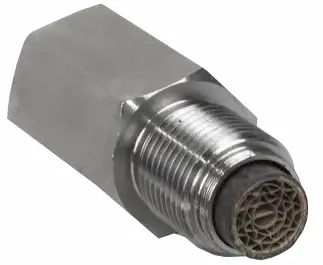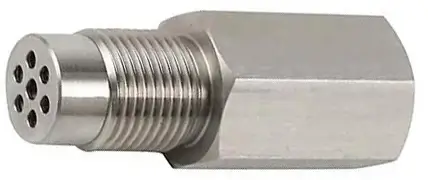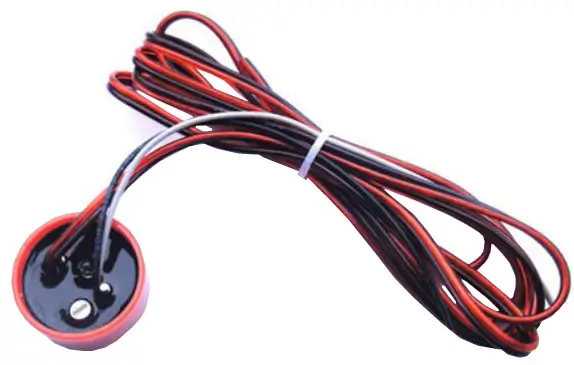What’s the best way to bypass an O2 sensor?
How to Bypass an O2 Sensor: Understanding the Risks and Alternatives
Oxygen (O2) sensors monitor the amount of oxygen in the exhaust, helping the ECM determine the best air/fuel ratio and also helping it determine the efficiency of the catalytic converter. While some people may consider bypassing an O2 sensor as a solution to certain performance issues or to avoid costly repairs, this practice comes with significant risks and legal implications. This article will explain why someone might consider bypassing them and the potential consequences of doing so.
Why Consider Bypassing an O2 Sensor?
Some drivers consider bypassing an O2 sensor for several reasons, including:
They Have A Check Engine Light: A faulty O2 sensor can trigger the check engine light, which can be annoying and might lead to a failed emissions test. Some people bypass the sensor to turn off the light without fixing the underlying issue.
They’ve Performed Modifications: Enthusiasts who modify their vehicles for performance may find that O2 sensors interfere with their desired air-fuel ratios, leading them to consider a bypass.
They Want To Avoid An Expensive Repair: A catalytic converter can cost upwards of $1,500 or more. Bypassing an O2 sensor can turn off the check engine light that’s nagging you to replace the converter. Bypassing the sensor might seem like a cheaper alternative.
How to Bypass an O2 Sensor
Bypassing an O2 sensor typically involves tricking the ECU into thinking the sensor is functioning normally, even when it’s not. There are several methods people use to bypass O2 sensors:
Using a Dummy Sensor or Simulator: One common method is to install an O2 sensor simulator or dummy sensor. These  devices send a constant signal to the ECU, mimicking the output of a working downstream catalytic converter O2 sensor. This tricks the ECU into believing the post-catalyst exhaust is correct, thereby preventing the check engine light from coming on.
devices send a constant signal to the ECU, mimicking the output of a working downstream catalytic converter O2 sensor. This tricks the ECU into believing the post-catalyst exhaust is correct, thereby preventing the check engine light from coming on.
Spacer or Defouler Method: Another method is to install a spacer or defouler between the O2 sensor and the exhaust stream. This moves the sensor out of direct contact with the exhaust gases, reducing its exposure to the emissions it should monitor. This method can prevent the sensor from detecting a problem and keep the check engine light off.
sensor out of direct contact with the exhaust gases, reducing its exposure to the emissions it should monitor. This method can prevent the sensor from detecting a problem and keep the check engine light off.
If the catalytic converter occasionally sets a P0420 trouble code, a spacer might work by smoothing out the waveform coming from the post-cat O2 sensor. However, if you

When using an O2 spacer, the spacer screws into the cat/exhaust downstream bung and the sensor screws into the spacer. So the sensor only sees a small portion of the exhaust
r emissions testing facility performs a visual inspection, you’ll get caught and fail. Spacers and defaulters rarely work. My advice is to skip this option.
Resistor Modification: Some people opt to use resistors to bypass the O2 sensor. By inserting a resistor in the sensor’s wiring, you can create a fixed voltage signal that mimics the sensor’s normal output, tricking the ECU into thinking the sensor is functioning correctly.
Downsides to the O2 spacer and mini-cat simulator
Neither the spacer nor the mini-cat are long-term solutions to a P0420 or P0430 problem. They can only be used to try and fake out the smog test. Here’s why:
How the ECM tests the catalytic converter
In normal operation the ECM is constantly adjusting the air/fuel mixture to obtain the right amount of power with the lowest emissions. The ECM reads the upstream O2 sensor and makes adjustments if the exhaust is too rich or too lean. So, the upstream O2 sensor data is constantly changing. However, if the catalytic converter is working properly, it stores oxygen and uses that oxygen to help burn off excess hydrocarbons like fuel and oil. So the downstream post-cat sensor should be reading almost a flat line; neither rich nor lean. When a catalytic converter fails, the downstream O2 sensor follows the upstream waveform because the cat converter can absorb oxygen or burn hydrocarbons.
To test the efficiency of the catalytic converter, the ECM purposely commands a quick, very rich mixture to fill the cat with excess fuel, followed by a quick, lean mixture to fill it with oxygen. Because these are rapid changes, the catalytic converter can’t react fast enough to remove the excess hydrocarbons or absorb all the extra oxygen. During the test, the ECM expects the downstream sensor to see these extremes and report them to the ECM. Then, the ECM goes back to normal air/fuel mixtures, and it expects the cat converter to respond by cleaning up the exhaust, and the post-cat O2 should report a flat line again.
If the post-cat sensor doesn’t fluctuate as expected during the test or flat line after the test, the ECM will set a P0420 or P0430.
That’s why O2 spacers and O2 mini-cat simulators don’t work over the long term: they fail the cat test.
Actual O2 simulators can handle the test by expecting the test and altering the results
I’m not endorsing this deceptive practice; I’m only explaining how it works. Here’s a description from EZ CEL:
“EZ CEL Fix oxygen sensor eliminator gives the ECM with mimicked, fluctuating voltage signal and tricks the Power Control Module into thinking the emissions are within allowance. Car Truck SUV oxygen sensor simulator will allow you to drive without converter and still keep the ECU warning light off. A popular alteration is to decat the exhaust or install an aftermarket header, to free up the performance level. Exhaust gas is controlled through 2 to up to 4 oxygen sensors. The front sensor controls the fuel management system and aftercat monitors converter function. When headers are installed or catalysts removed, the result is a catalyst efficiency check engine light failure code alerting the Powertrain Control Module that converter is missing or not working properly. Modified engine produces a larger amount of exhaust gases than allowed. You do not want to drive in safe mode with constant MIL light, and your Car Truck SUV will not pass emission test in many US states and countries. The ultimate solution is to wire up O2 sensor simulator to the lambda probe’s harness to mimic the o2 sensor.”—https://www.magnumtuning.com
Simulators have to be wired into the wiring harness to the post cat O2 sensor. And they have to be hidden if you have visual inspections.
The Risks of Bypassing an O2 Sensor
While bypassing an O2 sensor might seem like a quick fix, it comes with significant risks and potential consequences:
Increased Emissions: Bypassing an O2 sensor can lead to higher emissions, as the ECU is no longer able to adjust the air-fuel mixture properly. This can cause your vehicle to produce more pollutants, contributing to environmental damage and potentially leading to failed emissions tests.
Engine Performance Issues: Without accurate data from the O2 sensor, the ECU may not be able to maintain the optimal air-fuel ratio, leading to poor fuel economy, rough idling, hesitation, and reduced overall performance.
Damage to the Catalytic Converter: An incorrect air-fuel mixture can cause unburned fuel to enter the catalytic converter, potentially leading to overheating and damage. Catalytic converters are expensive to replace, and bypassing an O2 sensor could end up costing more in the long run.
Legal and Regulatory Consequences: Bypassing an O2 sensor is illegal because it modifies your vehicle’s emission system. It doesn’t matter if your state or province doesn’t conduct emissions testing; it’s still illegal because tampering with any part of the emissions system is covered by federal regulations that trump any state or province law. It can cause your vehicle to exceed emissions limits. If your vehicle fails an emissions test, you may face fines or be required to repair the vehicle properly.
Voided Warranties: Modifying or bypassing an O2 sensor can void your vehicle’s warranty, leaving you responsible for all repair costs if something goes wrong.
©, 2023 Rick Muscoplat
Posted on by Rick Muscoplat

